
Imagine your battery to be charged by a table, by just being placed on the table’s surface. Sounds fantastically fancy? Well, it’s not, as Panasonic has just unveiled a prototype of their advanced yet convenient solar powered inductive charging table, at the recent Retail Tech Expo held in Tokyo. It is touted to be able to power up devices simply by placing them on the table.

Inductive charging basically uses the electromagnetic field to transfer energy between two objects, and appliances using this technology have been there in the electronic market for years. But the novelty element in this product is that it allows direct connection with the device to be charged, when placed on the conspicuously black, square-grid charging panel. This direct power transfer mechanism in effect circumvents the need for coupling or even other alterations and paraphernalia.
The convenient attribute of practicality endowed in this innovative contraption is quite evident, especially in relation to spatial elements such as canteens, fast food areas and coffee shops. On their way to office, or being on their lunch break, one can just place their mobile battery on the table surface, for it to be automatically charged wirelessly. And at the end of it we should also not forget about the green essence of this technology, regarding its utilization of zero-emission, clean solar power.
Source: JapanTrends
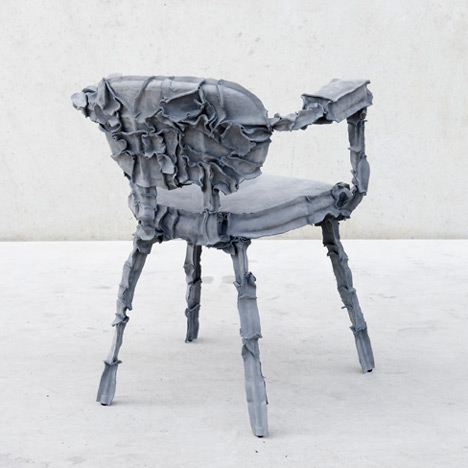
Dutch designer Pepe Heykoop has created this collection of furniture by covering an assortment of old chairs in odd scraps of leather. (more…)
Okay, so… I can’t believe I’m going to say this, but this is one sexy coffin. I always thought I wanted to be cremated, but Jacob Jensen’s Diamant Coffin Series has made me have a change of heart. The design, a winner of the prestigious 2011 Red Dot Award, combines sustainable materials and stealthy aesthetic into a resting place that would even make Dracula jealous. On a softer note, the diamond inspired shape’s highest point lines up with the deceased’s heart, signifying love and eternity.
Designer: Jacob Jensen
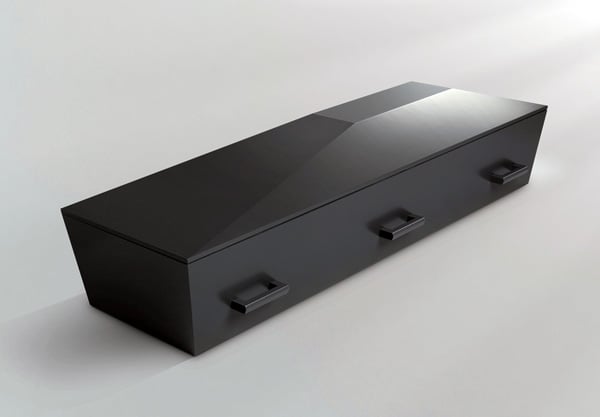
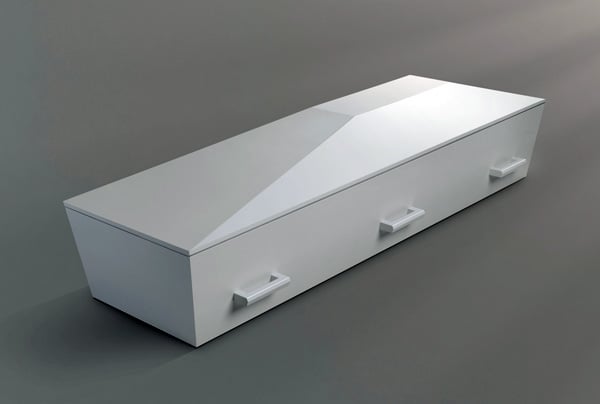
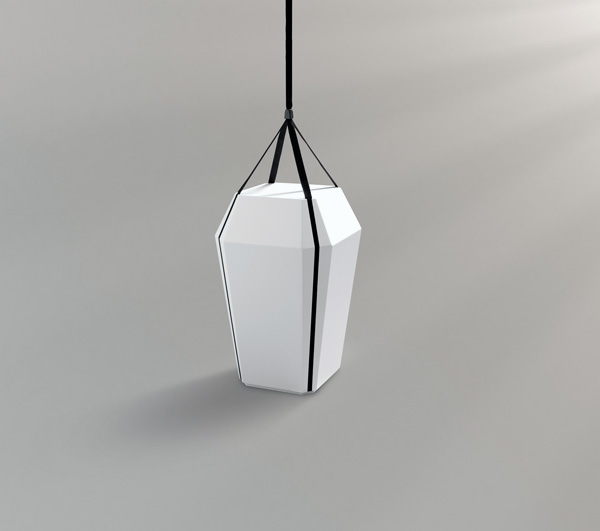
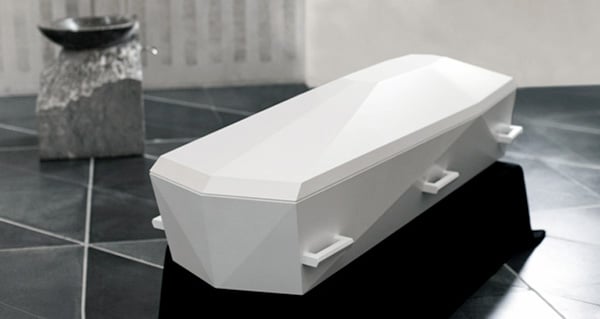
----------
Yanko Design
Timeless Designs - Explore wonderful concepts from around the world!
Yanko Design Store - We are about more than just concepts. See what's hot at the YD Store!
A survey reveals that 70% of slate-style computer owners fiddle with them while watching television. How long before we don't need one of those small screens at all?
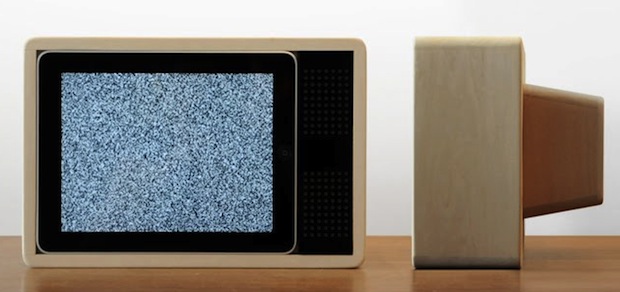
Good night and good luck, indeed.
According to a new study 70% of consumers who own a slate-format computer (which basically means the iPad with the occasional cameo from a Nook Color, or PlayBook) tinker with their device while also watching TV. And 25% of owners use them to occupy their minds while they do...something else...in the bathroom. E-readers, meanwhile, are used the vast majority of time in the bedroom. Does this mean prime time TV is doomed, and that the phrase "Not tonight, darling--I'm Kindling" is becoming common? Nope, and nope--but it is a sign entertainment is changing perhaps faster than anyone thought.
The data comes from a fresh Nielsen survey, and it backs up some thinking that's been developing for some while. Nielsen spoke to nearly 12,000 "connected device" owners, and discovered that 68% of tablet PC users user them while watching TV, an activity that took up about 30% of the time they used the device, while just 35% of e-reader users did this (for 15% of the time). And while 57% of tablet PC owners also use them in bed, a bigger 61% share of e-reader usage happens in the bedroom--an activity that takes up 37% of their total e-reader usage time.

These use cases match up with your expectations perhaps--while you're watching Jon Stewart tear a wayward politician a new one, you may be tempted to tap away at your iPad to see what said politician has been up to in the news, or look up a guesting cast member on your favorite show to see if they're coming back in a future episode. This kind of incremental use is something the TV networks won't worry about...it actually boosts engagement in their shows, which is why there are experiments like Fox's ill-fated Twitter and Fringe mashup. But there's a danger--because switching to a casual game, Facebook or your email is just a few fingertaps away, and we all know how addictive this process can be.
Basically that fast-fading 1950s image of the family all clustered around that one screen, every eye captivated by its monopolistic channel for messages is now firmly in history. Prime time TV content creators should, in the light of this data, have to think carefully about how to keep their audience engaged, otherwise the value of all those interstitial ads will decline fast.
Meanwhile e-readers are slowly supplanting paper books, and hence their majority usage in bedrooms is probably to be expected. Interestingly, here's where one design collision occurs: The Kindle, allegedly the best-selling e-reader, uses e-ink tech that needs to be illuminated from above. This means the traditional bedside lamp has a good future ahead of it, as does the booklight. Wouldn't a self-illuminating screen be better?
Nielsen also surveyed smartphone use, and frankly it's these devices that are really changing everything: 68% of owners use them while watching TV, and use cases involving friends and family, commuting, shopping, all run around the 50% use mark. Smartphones aren't used so much in class or in the bathroom (worried about dropping the smaller, harder to hold little buggers in the tub?)--but roughly one in two owners seems to be using them in pretty much every other situation, including just killing time waiting for something else to happen.
What can we learn from this data? Smart gadgets are pervasive. They're already changing long-held habits, and doing so very fast. If you're a content creator on almost any platform, you'll need to be aware of how your audience's attention is changing, and if you're a marketer then think of the plethora of new ways to appeal to the public through their emerging habits.
Related Story: With Social News Show "What's Trending," CBS Hopes To Reclaim Cord-Cutters
[Image: Jonas Damon]
Chat about this news with Kit Eaton on Twitter and Fast Company too.
“I selected this article because to create sustainable products/services start with understanding consumer behavior and habit to develop value add product”

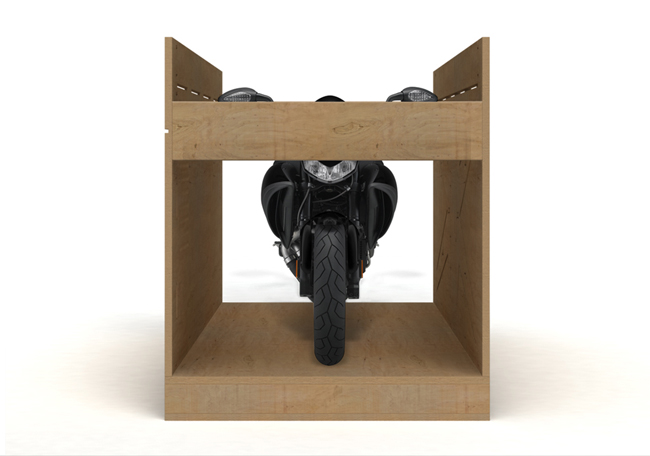 The concept is the creation of the Miami-based designer Michael Kritzer, who channeled his childhood love of model-building into a way of further engaging the owner with the product. “I wanted the crate conversion to be easy but not so easy as to be forgettable,” Kritzer tells Co.Design. The pieces have to be routed out and assembled with nails or screws (the owner’s choice), and to add some challenge, there are no instructions. “If it came out a little different -- but was as useful or more so than intended -- then great,” he says. The holes in the tabletop provide places for jigs and tools.
The concept is the creation of the Miami-based designer Michael Kritzer, who channeled his childhood love of model-building into a way of further engaging the owner with the product. “I wanted the crate conversion to be easy but not so easy as to be forgettable,” Kritzer tells Co.Design. The pieces have to be routed out and assembled with nails or screws (the owner’s choice), and to add some challenge, there are no instructions. “If it came out a little different -- but was as useful or more so than intended -- then great,” he says. The holes in the tabletop provide places for jigs and tools.
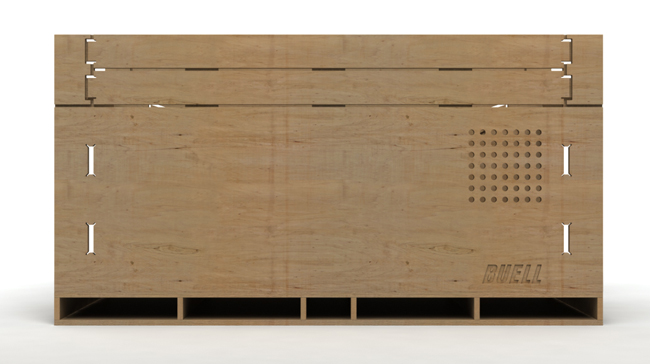
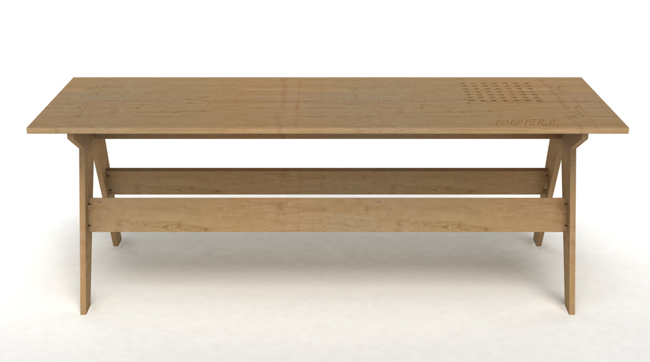 Of course, Crateable repurposes a ton of material that would ordinarily end up in a landfill, while transforming a prosaic object into a thing of enduring beauty. “You get a situation where a once short-lived product becomes a decade-plus artifact of that time,” Kritzer says. Sadly, with Buell’s demise, it’s an artifact whose time never came.
[Hat tip to Core77]
Of course, Crateable repurposes a ton of material that would ordinarily end up in a landfill, while transforming a prosaic object into a thing of enduring beauty. “You get a situation where a once short-lived product becomes a decade-plus artifact of that time,” Kritzer says. Sadly, with Buell’s demise, it’s an artifact whose time never came.
[Hat tip to Core77]
123D lets you easily fabricate objects, not just visualize them.123D differs from other free 3-D modeling software like Google Sketchup in that it's designed to let you easily fabricate objects, not just visualize them. The software's "Make It" link will let you push your 3-D file to fabricating partners like 3-D Systems, Ponoko, and TechShop, or to your own MakerBot (if you have one). Because 123D has physical output in mind, it includes ingenious features like a "shell" command that turns any solid digital model hollow, which makes it much faster and cheaper print. But high-end precision solid modeling is possible as well, thanks to the "perfect stereolithography files" that 123D creates. "Solid modeling means Autodesk 123D can create perfect watertight solids, with no gaps or other situations which causes 3-D printing to fail," Dzambazova explains. But before you start to feel intimidated by all this power, rest assured that Autodesk intends 123D to be simple enough to play with like a toy at first. "We tried to keep the UI very clean, and eliminate any dialog boxes and command lines which are not obvious to an amateur," says Dzambazova. "It's all contextual: when I pick or select something, at the mouse I'll see all the things I can do with that selection. It doesn't display what you can't do." That encourages playful experimentation right out of the box, as a user pushes, pulls, cuts and stretches 3-D shapes using intuitive actions. You can also add exact parameters "in a little input field on the fly," Dzambazova adds, "but you can 'graduate' to that. It's like a video game: You don't get dropped into the expert level the first time you play." [youtube RfrvEZgPiEg]
Autodesk intends 123D to be simple enough to play with like a toy.Part of creating that appealing first impression is a massive library of over 4,000 prefab components to play and build with: common shapes and objects, screws, bolts, pins, even entire rooms. And instead of displaying these components in abstract, Photoshop-like "layers" -- "that's a 2-D paradigm that doesn't make sense for physical objects," says Dzambazova -- 123D provides an intuitive "assembly map" that groups objects in terms of the pieces they're made of, just like in real life. (For example, a guitar would "contain" the body, strings, neck, and tuning screws.) 123D is a beta product only available for Windows at the moment, but Autodesk promises "a whole series of these introductory tools" to come, including Mac, mobile, and tablet-optimized versions. That's a big contribution to making "maker culture" become just... culture. "There's a blurring between pro and amateur: High-end software that was once used only for work is now used for fun, and applications that were fixed are now mobile," says Dzambazova. "This is a fundamental change in 'making stuff.' The whole point is that with tools like 123D, small players can play the big game." Some assembly required, of course. [Download 123D for free here]
The Trap Light is a glass lamp that has had a photoluminescent pigment added. This allows the glass to ‘store’ light, allowing it to glow softly for hours after exposure to illumination, helping to fill a room with a magical glow.
The Trap Light has been created by Gionata Gatto and Mike Thompson, it has been designed to illuminate a room without the need for much electricity. The idea is to reuse the light energy, the glass is able to absorb the energy giving off by nearby sources like sunlight, CFL, Tube lights, or LEDs due to the photoluminescent pigments within the glass, these pigments then emit light as a glow without needing to consume any additional electricity.
Each Trap Light is hand blown using a Murano glass blowing technique, the body of the glass is embedded with photoluminescent pigments and the exact shape is produced due to the use of a wooden mould. The formed lamp is then surrounded by a cage like structure to help protect it. The lamps can be wired up to have a lightbulb within them, this would then provide the light to ‘charge’ the glass to allow it to glow. For greater freedom the lamps can be used without a bulb, this would mean no need to position near a plug socket, or to provide batteries, just ensure that the lamp would receive illumination from other nearby light sources.
The Trap Light is thought to only require around 30 minutes of light to ‘charge’ and from this it could produce a warming glow for up to 8 hours (dependent on the strength of light it had access to before hand). This would allow you to be able to leave lights turned off for greater amounts of time, saving on electricity bills, while producing a magical effect in your room. The light would be useful for children, emitting a comforting glow after lights have been turned out at night, without needing to leave a nightlight running all night. The Trap light is a enchanting way to ‘reuse’ light energy helping to help bring down energy bills.
Source: iGreenSpot
Want to buy this gadget? Check out the Trap Light – Photoluminescent Glass Lamp article on EnviroGadget to see the lowest prices for this gadget.
© 2008 to 2011 EnviroGadget.com. You can now keep up with the latest eco-gadgets on the EnviroGadget Facebook page. Why not help us to spread the word?
Related posts:
Registration for the Bright Ideas Lighting Design Competition closes this Sunday, May 22nd – which makes this week your last chance to submit a brilliant energy-efficient lamp and win $1,000! We’re looking for shining examples of sustainable lighting that carefully consider material use and are capable of holding an LED bulb – so if you have a design for a table, floor, or pendant lamp that’s ready to shine send it in today.
Permalink |
Add to
del.icio.us |
digg
Post tags: bright ideas lighting design competition, Design Competition, design contest, eco bulbs, eco design, eco lamp, energy efficient lamps, energy efficient lighting, energy-efficient LEDs, Enter the Inhabitat Bright Ideas Lighting Competition, green bulbs, green design, green lighting, inhabitat, LED bulb, LED bulbs, Philips, sustainable design, sustainable interior lighting
 Architects and engineers from HOK / Vanderweil showcased their creativity and sustainable design expertise with a winning net zero building retrofit design in Metropolis magazine's Next Generation Design Competition 2011.
Architects and engineers from HOK / Vanderweil showcased their creativity and sustainable design expertise with a winning net zero building retrofit design in Metropolis magazine's Next Generation Design Competition 2011.



Comments by our Users
Be the first to write a comment for this item.